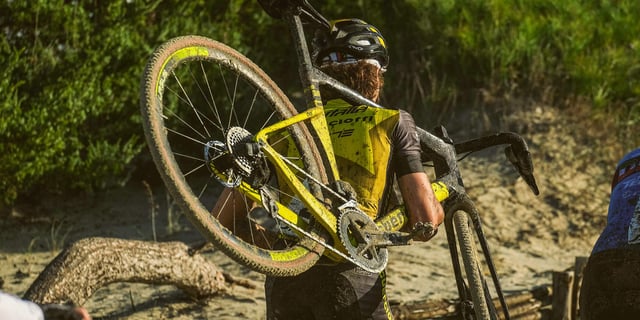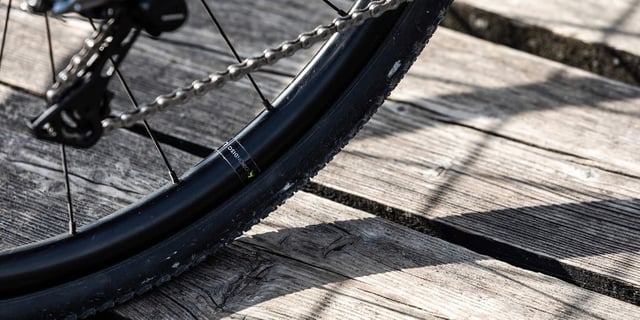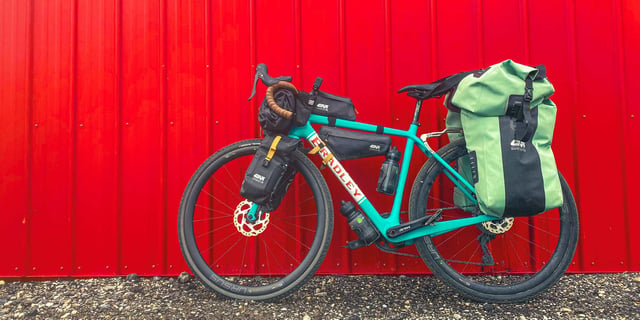
Cyclocross is a direct descendant of road cycling, although it happens on a mixture of terrains, sometimes tarmac and sometimes mud or grass, with a combination of ascents/descents and flat stretches.
One image will immediately give an idea of the sport: a cyclist running while carrying a bike.
Cyclocross: what is it?
Cyclocross is a winter sport. The ideal season runs from October to February: during these months road bikes are parked and many cyclists turn to cyclocross.
Races are held on short courses. The terrain is sometimes tarmac and sometimes mud, with branches, brambles, ups, downs and obstacles. This is why on certain stretches, cyclists get off their bikes and carry them through the mud. This is the best-known and most iconic feature of the sport.
In each race, the cyclists complete several laps of the course. Although the participants depart together from the starting blocks, the race is against the clock. The maximum time is established by the judges.
The course is characterised by sudden changes in incline and speed; this means that cyclocross requires specific techniques and physical skills.
A good cyclocross rider has extremely advanced mastery of the bicycle and great physical fitness, highly developed muscular strength and superb cardio-vascular condition.
The origins
In the early 20th century, road cycle races were paused during the winter months. To avoid too long a period of inactivity, cyclists trained on fields, muddy ground and paved roads. The difficulties of the terrain often forced them to pick up their bikes and run.
This was extremely effective training for the heart, lungs, legs and muscular strength.
Over time, this type of training became a discipline in itself, today (since the 1940s) governed by international rules and a federation called the Union Cycliste Internationale (UCI). Some road cyclists still use the activity for rigorous training off-season.
The official birth of cyclocross was in 1902, when the first races were held in France. Although nowadays the sport is practised all over the world, it remains strongly rooted in its original area: in France, Belgium, the Netherlands and Luxembourg it is practically a national sport. Indeed, these countries have the best medal collections in major competitions, particularly the World Championships (the first edition was held in 1950). In Italy the sport has a keen following, and is constantly developing.
Cyclocross: cycling and running carrying a bike
The terrain covered and the need to carry the bike mean that cyclocross bikes have particular characteristics.
Despite the mud and the steep ascents and descents, bikes without suspension are used. Races are short and demand a fast, rigid structure.

Nevertheless, these bikes need to be extremely lightweight and manoeuvrable, so that the athletes can carry them. So the frames are made using ultra-lightweight materials such as carbon, with aluminium wheels. The wheels and hubs are vitally important for the performance of the bike during racing, as they determine the rigidity and the fluidity of pedalling. High-quality cyclocross wheels accentuate the performance of a well-trained athlete and make the most of every ounce of energy produced by their body during the race.
How do you carry a bike? Simply by placing your shoulder and arm through the main triangle of the frame and running with it. This typical feature of cyclocross makes the sport particularly tough, requiring constant and hard training for success.



